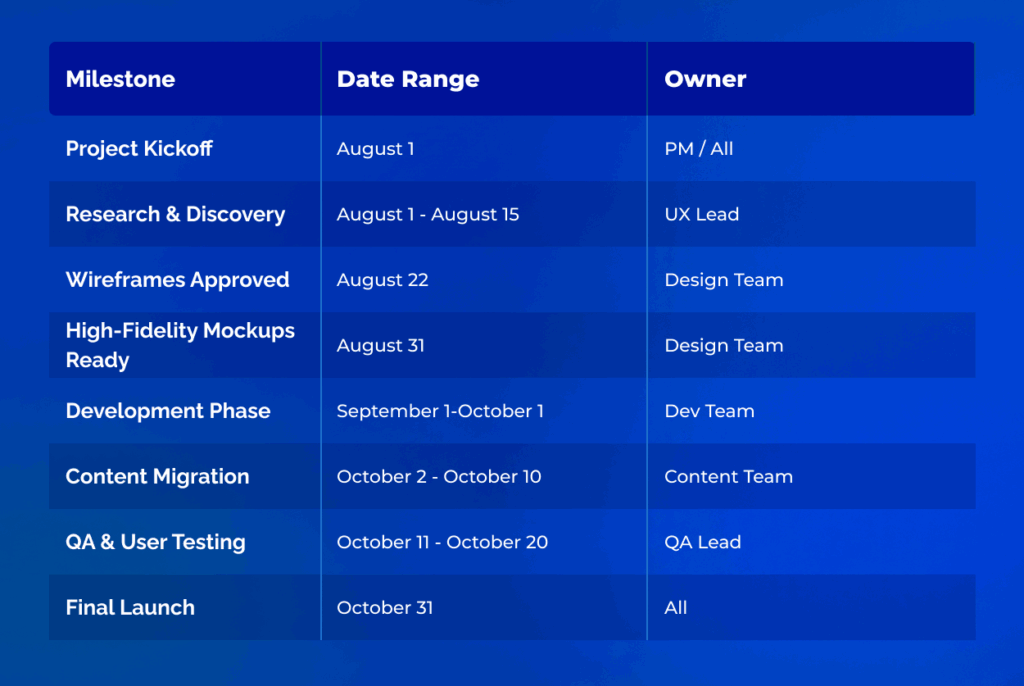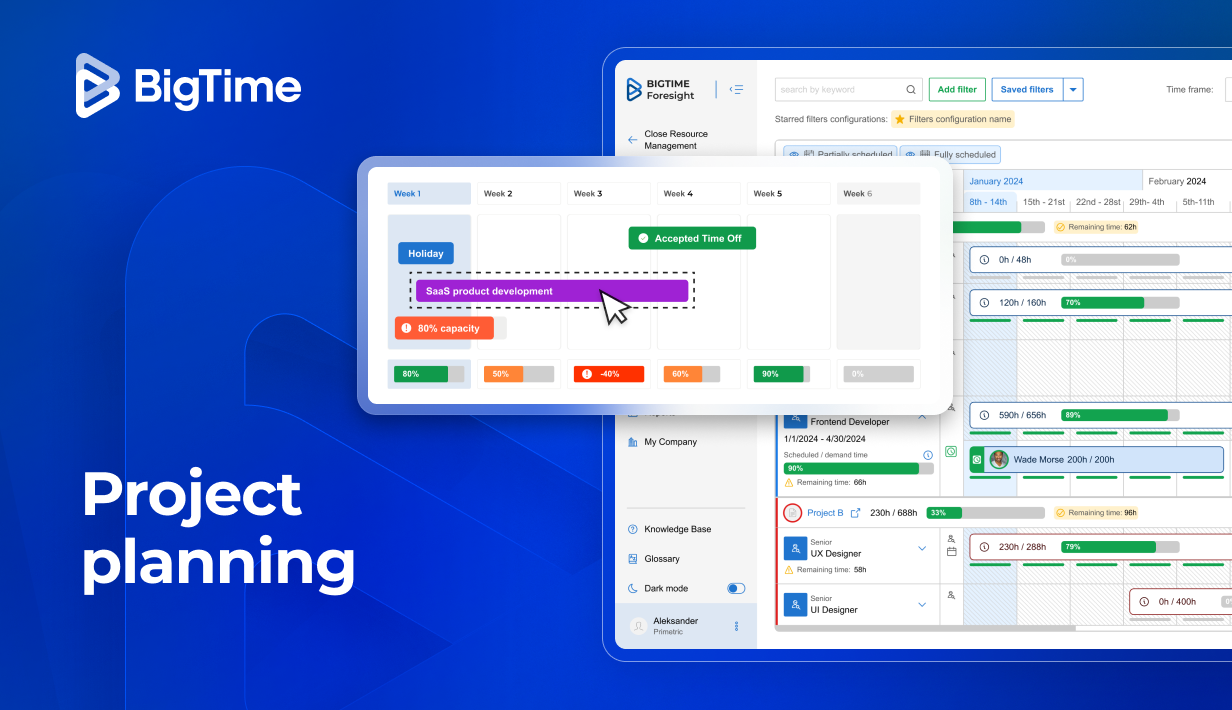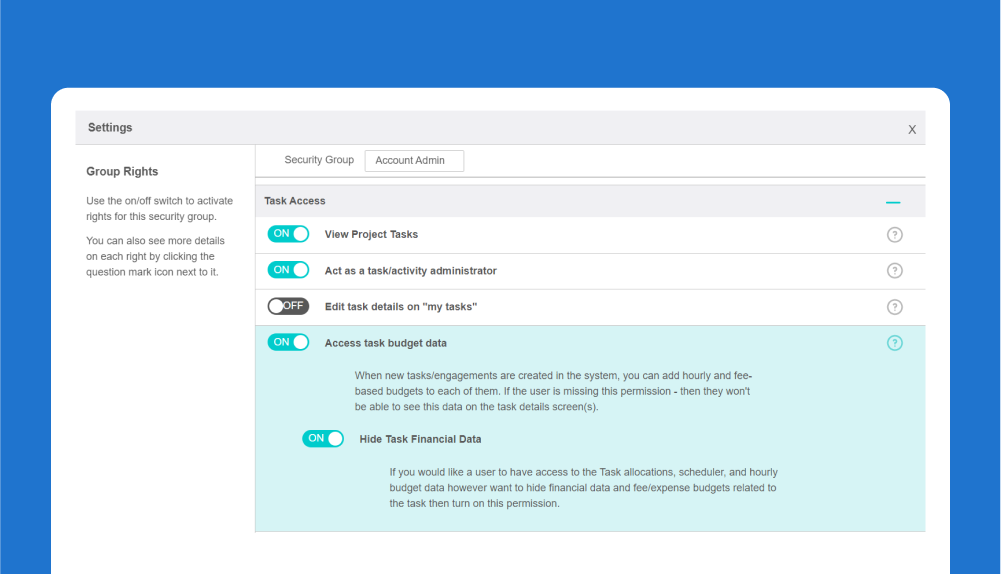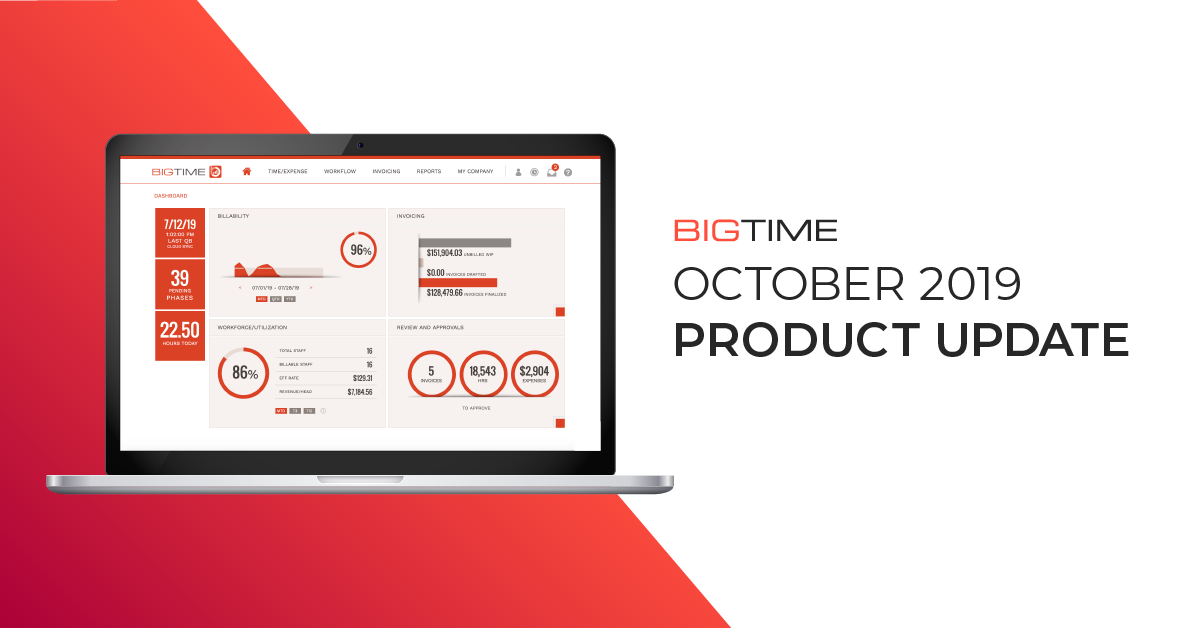From the initial idea to the final report, the project lifecycle is full of challenges. Fortunately, with a bit of project planning, managing all the deliverables can be much simpler and more effective even before the project starts, and without missing a single piece needed for success. Here’s how you can master the process.
In this article, you’ll learn:
- What is project planning?
- What is a project plan, and what are its key components?
- Why are project plans important?
- How to create a project plan in a few simple steps?
- What project planning tools can help you create a successful project plan?
What is project planning?
Project planning is a part of project management process aiming to determine how to complete a given project in a certain time frame. In project planning process, project manager creates a document – a project plan – which acts as a baseline for the entire operation and outlines all its components: from project timeline to task management.
Importantly, project planning is not just a standalone process; it is a part of project management process conducted after project initiation, but before project execution. As such, it is a vital for determining the project’s future and its exact next steps, down to individual task dependencies.
Why is project planning important?
Launching a project without knowing what it involves is a risky endeavor. Project planning aims to unveil all the project components, shedding light on the possible gaps in project scope and project objectives and helping project managers avoid unforeseen problems. As a result, it’s a necessary component of any risk management plan – even for the smallest of projects.
Additionally, with all the key deliverables described in a single document, project plans help hold all the stakeholders accountable, regardless of the stage of the project. Project management plan leaves little to imagination, helping both managers and team members plan their actions ahead and keeping everyone on top of their responsibilities.
Last but not least, according to numerous sources, creating a project plan can drastically improve chances for project success – and that’s the main reason why it should become a backbone of your project management.

What is a project plan?
Project plan is a document outlining the sequence of tasks, milestones and deliverables that need to be completed for the project to be successful. Ideally, project plan should describe an ideal project schedule, along with the exact scope, resources and deadlines for each critical task.
What are the components of a perfect project plan?
A successful project plan describes project scope in detail, starting from the smallest tasks and ending with major accomplishments. Therefore, it should contain the following components:
- Project objectives – Main aims of the entire operation, for example, developing a new app or completing a construction project.
- Project scope – The entriety of activities that need to be completed to fulfill project requirements.
- Project tasks – Individual activities assigned to different team members.
- Project milestones – Important achievements acting as a checkpoint indicating project progress.
- Project budget – Estimated costs and incomes for a given operation, complete with overheads.
- Necessary resources – Usually specialists or materials needed for project execution phase.
- Success metrics – In general, they include KPIs such as profitability or productivity, but they can also outline the desired quality or characteristics of a project.
Project plans vs project charter – what’s the difference?
Project charter is a simple document outlining the main objectives and deliverables on a very general level. It is generally used to pitch project ideas and proposals to obtain approvals from key stakeholders before the project starts – and often before the contract is signed. As a result, project charter comes weeks or even months before a project planning phase begins.
Project plan, on the other hand, is a much more detailed documents outlining everything there is to know about the project execution. Happening after project initiation, it is an essential part of project management and delivery, making it a backbone of the entire process – not just a description of a vague idea.
How to create a project plan in 7 steps
You already know the definition of project planning; but that leaves us with a question: how to create a project plan? Here are a few simple steps that will help you do that.
Define project goals and objectives
Each project should have a clear, defined end goal – be it a delivery of a certain product or providing a service. Still, there are dozens of smaller objectives between the project’s start and finish that mark the progress made. By mapping them before the clock starts ticking, you can ensure that all of your team members are aligned and work towards common goals, regardless of the project phase.
What’s the difference between project goals and objectives?
Project goals usually refer to the desired outcome of the project on the highest level possible. In other words, the goal describes what project ultimately aims to achieve – for example, a development of a new app, building a house, or releasing and summarizing a marketing campaign. Therefore, in many cases, projects tend to have very few goals, or even only one of them.
Project objectives, on the other hand, take a more granular approach to project outcomes. They generally describe specific, significant deliverables that need to be completed to achieve the ultimate project goals. In other words, project objectives form a path leading up to the final project goal, marking significant achievements on the project timeline.
Define stakeholders and their roles
There are dozens of people involved in the delivery of any successful project. Still, to achieve that success, they need to know their roles and responsibilities – and you need to know which skills you need to achieve your objectives.
At this stage of project planning, try to imagine your perfect project team and its structure – preferably by using a work breakdown structure to outline the full chain of command. Define which roles will be directly responsible for the project success or delivery of its individual parts. Additionally, remember to identify the stakeholders or project managers capable of managing approvals – in case of significant milestones or sudden changes, their input might prove to be invaluable.
Define project scope and prioritize deliverables
With project goals and objectives at hand, now you can take a closer look at everything that needs to be done to complete a project. To do that, divide individual project objectives into smaller project deliverables, and deliverables into individual tasks. To ensure effective project planning process, remember to account for any project dependencies that might later prove critical to the entire endeavor.
At this stage, try to be as precise as possible to ensure that your final project plan reflects the reality. Additionally, leave some room for unexpected changes, such as absences or delays, to mitigate risks rooted in these popular problems.
Allocate resources
With all the project data ready, you can now move on to resource management. Based on the work breakdown structure and the project scope you prepared, find the best human resources for each assignment to create a detailed project schedule.
An example of Gantt charts in BigTime
To ensure that all of your project resources are aligned without any errors and mitigate any project risk, resource allocation should not be completed in an Excel spreadsheets – while it is a widespread solution, it is rarely precise enough, especially when multiple projects are intertwined with each other. Instead, use Gantt charts to quickly manage allocations and ensure that your project team members are not subject to any schedule conflicts.
Set a project budget
At this stage of project planning, you should already know what needs to be done, and by whom. Now it’s time to turn that project management lifecycle into finances by creating a project budget.
To ensure that your cost estimates are as accurate as possible, start from calculating the costs of planned work based on hourly rates of assigned employees. Then, add any project overheads, such as materials, equipment, or external support, to the equation. Last but not least, remember that your project should also cover a fraction of organizational costs with its profits. You can determine the exact amount to add to your budget by calculating an overhead absorption rate for your operation.
Finally, make sure that all the costs fit into the final price of your project and leave a few pennies for a profit margin. If that’s not the case, you might need to look for cheaper resources, materials, or some shortcuts that could minimize the amount of billable work you need to perform to complete the project.
Monitor project progress
The project planning is now finished. Still, you should still keep an eye on the project to ensure it doesn’t deviate from your initial assumptions. If it does, you might want to involve your project management professionals into making some changes to the initial project plan to account for any significant variations.
Perform a final evaluation
Not all projects follow the plan from start to finish – but all can be used to improve the project planning process. After the project is over, analyze its performance and identify any factors that contributed to later changes in your schedule. Once a similar project appears on your radar, you can then use those conclusions to create more precise plans, mitigate risks and ensure project success every step of the way.

Project plan template
But how to create a project plan in practice?
Below you will find a free project plan template you can use to manage your projects and organize tasks.
Project plan example – website redesign project
Project overview
- Project Name: ACME Website Redesign
- Project Manager: Jane Doe
- Start Date: August 1, 2025
- End Date (Target): October 31, 2025
- Project goal: Redesign ACME’s public website to improve user experience, increase conversions, and align with new branding guidelines.
Project objectives
- Modernize site design to reflect brand refresh.
- Improve site navigation and accessibility.
- Increase conversion rate by 20% within 3 months of launch.
- Integrate a new CMS for easier content updates.
Project scope
Included:
- Complete visual redesign
- UX research and user testing
- Front-end development
- CMS migration (to WordPress)
- QA testing
- Deployment and launch support
Not included:
- Custom backend development beyond CMS
- Ongoing site maintenance post-launch
- Paid advertising or SEO strategy
Milestones and timeline

Roles and responsibilities
- Project Manager (Jane Doe): Schedule, communication, risk management.
- Design Lead (Alex Chen): Wireframes, mockups, style guide.
- Developer (Taylor Kim): Front-end development, CMS integration.
- Content Lead (Morgan Lee): Content migration, CMS training.
- QA Lead (Sam Patel): Testing, bug tracking.
Budget estimate
- Design: $10,000
- Development: $20,000
- Content Migration: $5,000
- QA and Testing: $3,000
- Contingency (10%): $3,800
- Total Estimated Budget: $41,800
Project planning software – the key to perfect planning phase
Creating a solid project plan can sometimes be a challenge – especially when the capabilities of an Excel spreadsheet prove to be insufficient. Fortunately, the right project planning tools can change that – and BigTime proves it every day.
In BigTime’s project management software, you can:
- Find the right specialists for the job in seconds and create flexible allocations in Gantt charts. Then, you can simply drag and drop the assignments to alter them.
- Create detailed project schedule and test out different scenarios to choose the best option for your project.
- Observe how project budget create themselves based on the allocations you make, all thanks to pre-defined hourly rates for each employee.
- Monitor the work as the project progresses – each change made by your team or other key stakeholders will automatically appear on your screen.
- Summarize the entire project execution phase with advanced reports showing you all the key KPIs, from utilization rates to profitability.
In short, BigTime can help you manage the entire planning process – and more – without a single minute of manual labor.
Want to see what else BigTime can do for you? Book a demo or start a free trial right now to see how we can turn a few minutes of project planning into years of project success.




